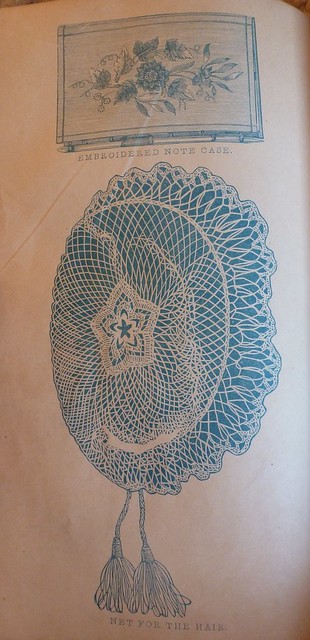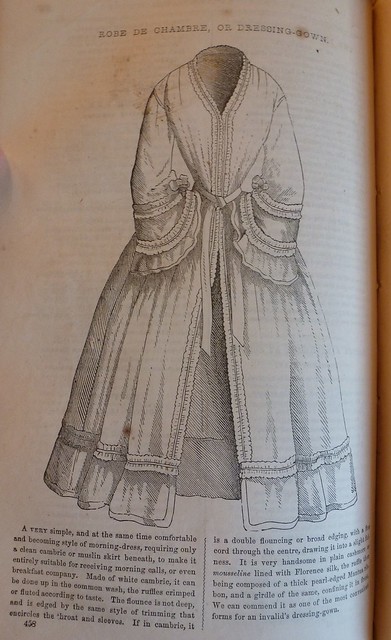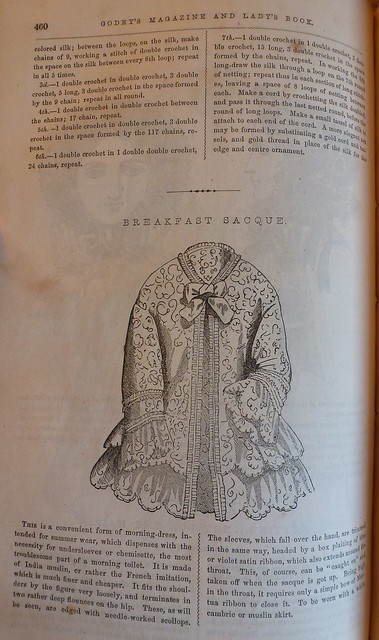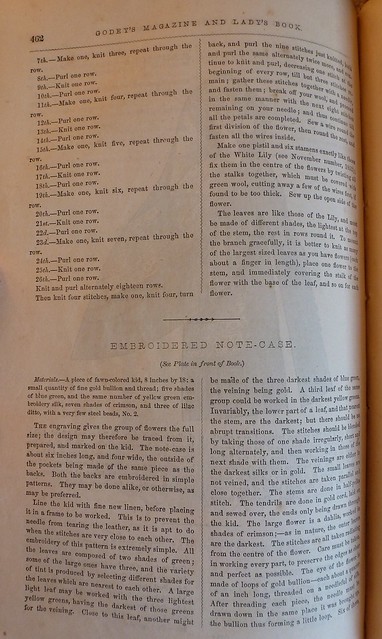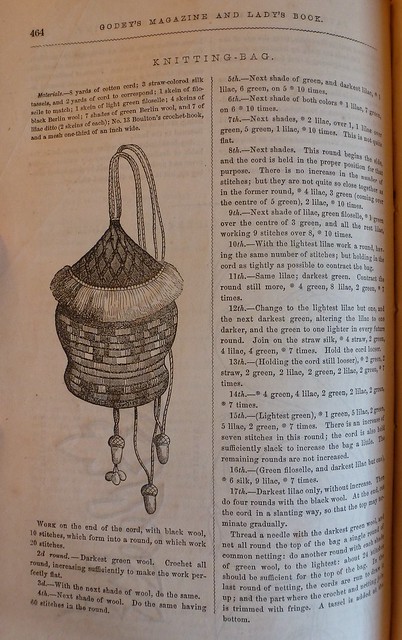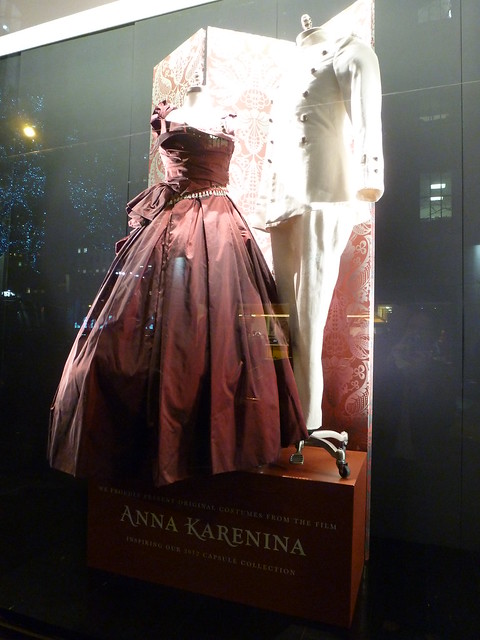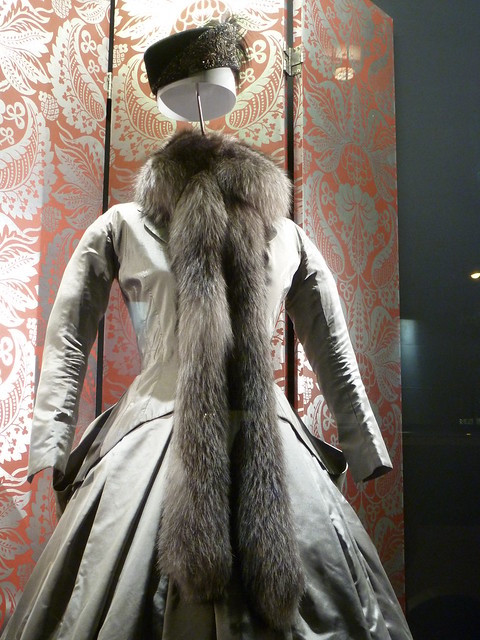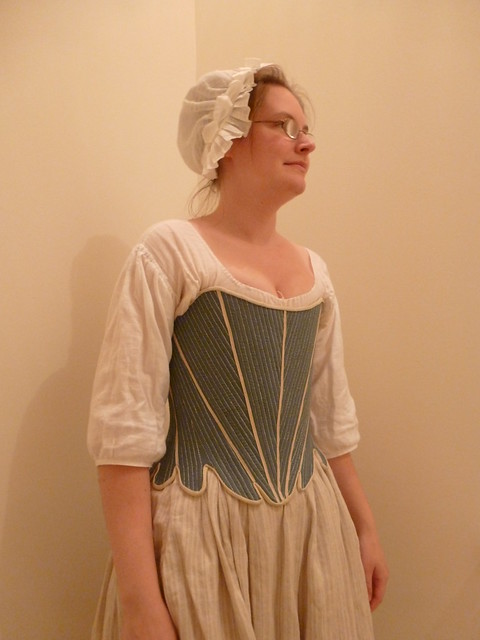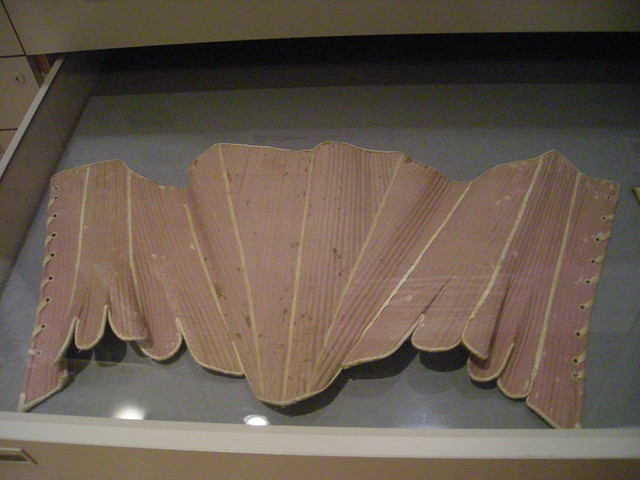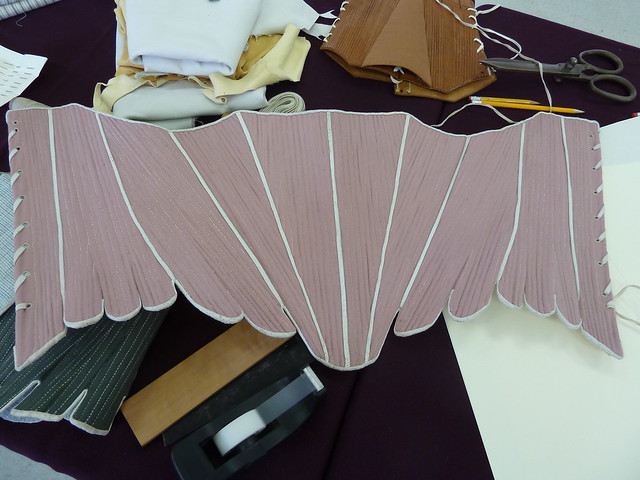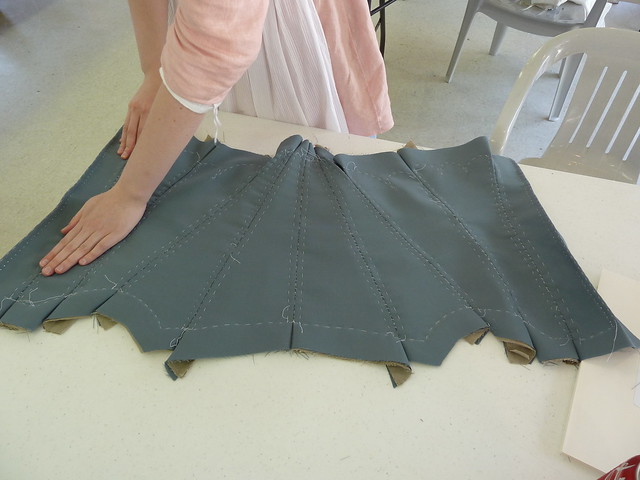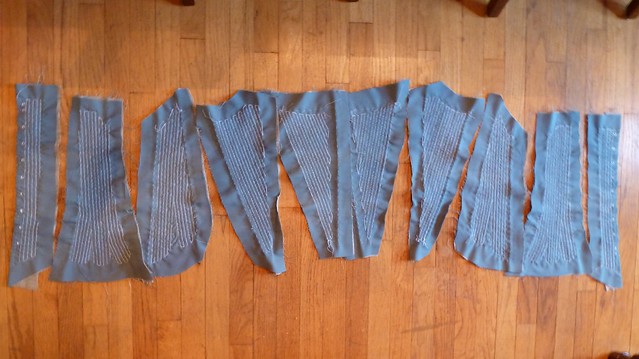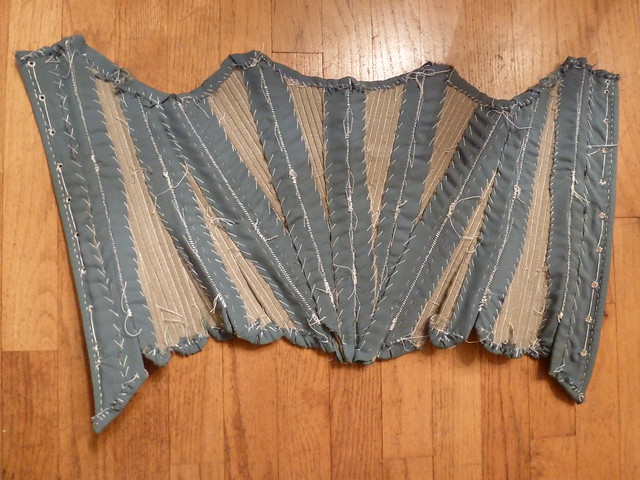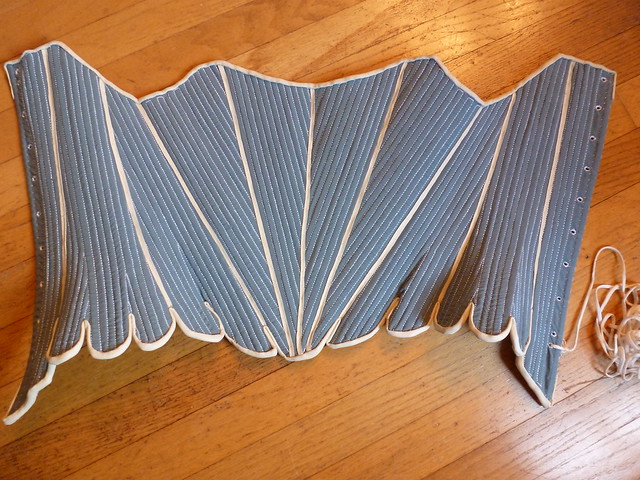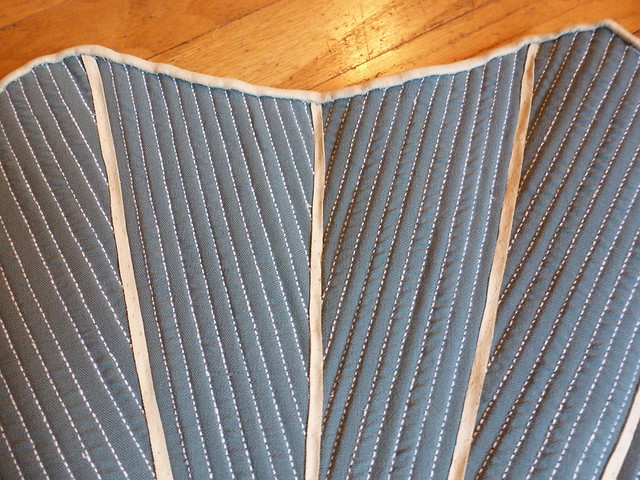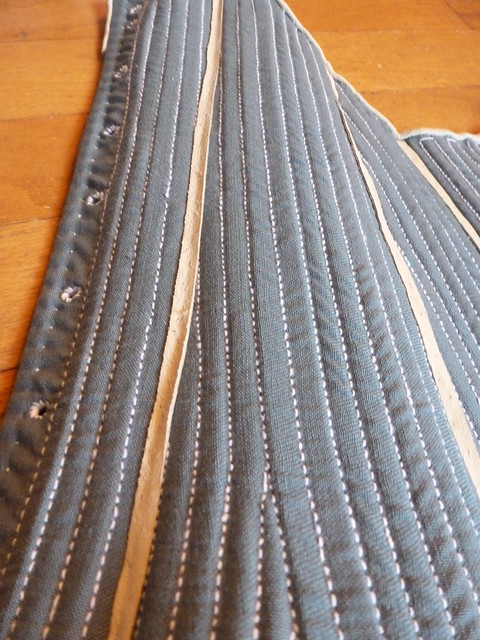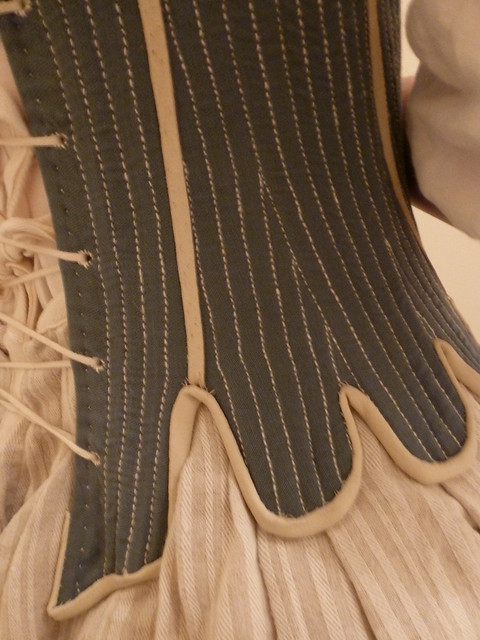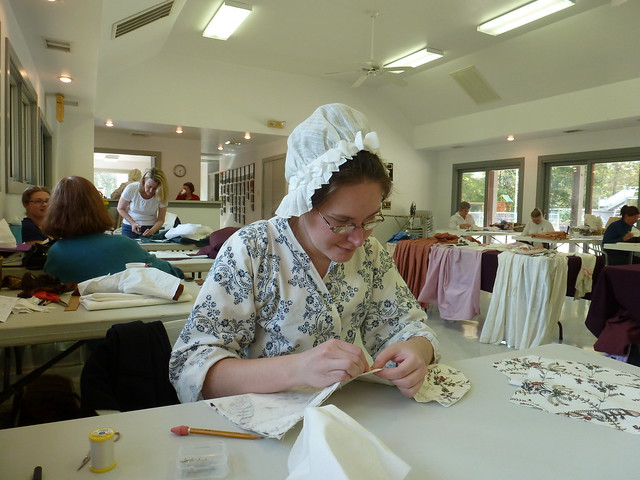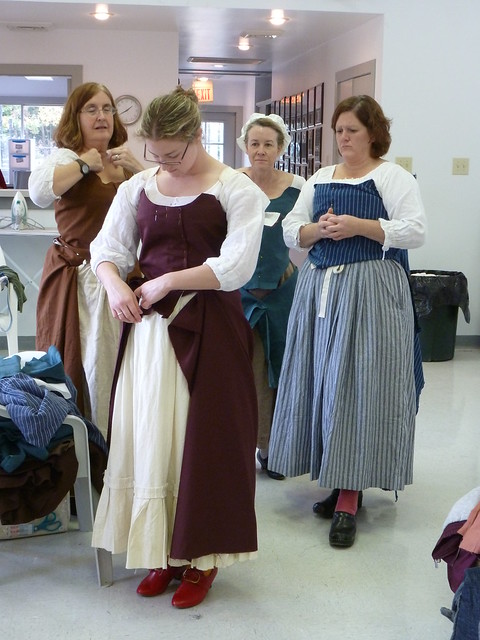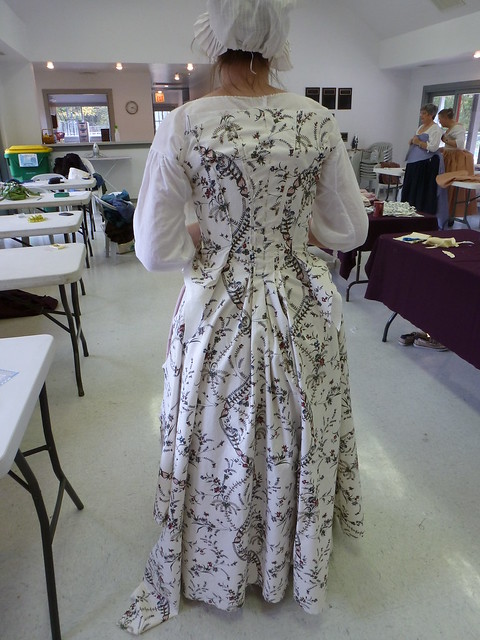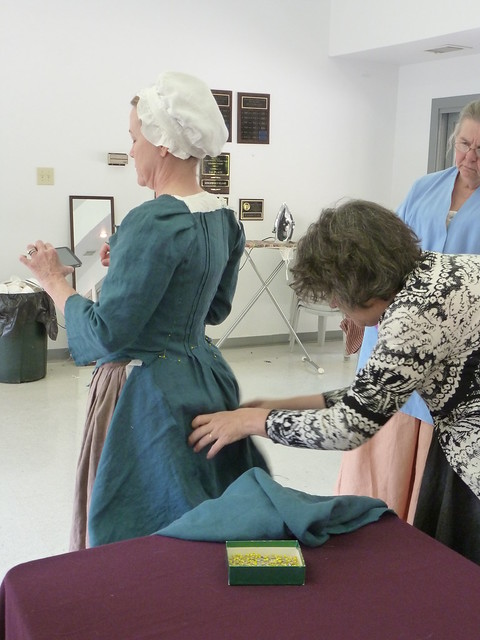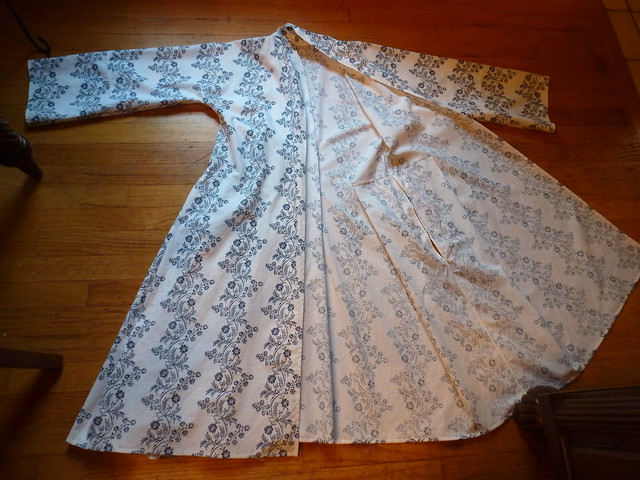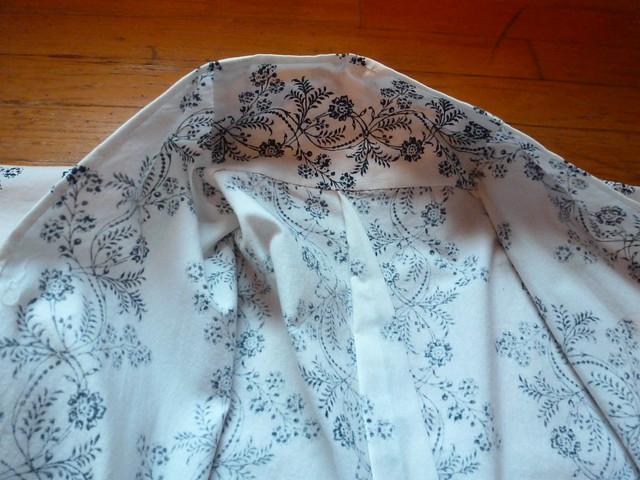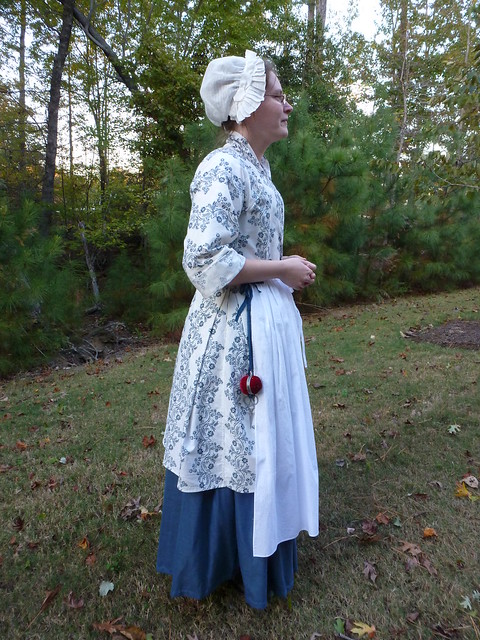I apologize in advance for the quality of the images. Although I have a scanner, I've discovered that there's no way I can preserve the integrity of the already fragile binding of the book and lay it flat. That means photos are the only options, and even those are difficult to achieve because of the tightly bound pages. I've done my best to ensure that everything is as clear and visible and undistorted as possible, but if there's something you really can't read or see and would like to have clarified, just let me know and I'll see what more I can do. I've set the images up so that if you click on them, they'll link you to their flickr page, where you'll be able to enlarge them all considerably and thus more easily read each one. Enjoy!
An embroidered note case and a hair net. T
he pattern for the former is included in the fourth
image; the latter is in the seventh.
Fig. 1st. - Walking dress of violet-colored silk, the skirt trimmed with three graduated flounces. The flounces are of moderate fullness, and edged by a trimming in scallops, they being inverted; that is, laid flat upon the flounce, instead of edging it. The corsage is a basque and gilet, the first of silk, and trimmed to correspond with the skirt, having a rolling collar, and being fastened in front by three flat bows of thick satin-edged Mantua ribbon. The vest, or gilet, comes close to the throat; it is of embroidered muslin, and fastened by small pearl or imitation opal studs, one in each scallop. Bonnet of silk and crape a little lighter in hue, the brim is edged by narrow blonde and crape ruches, and ornamented only by a few white and Parma violets placed high up, and passing across the hair. Small green parasol, lined with white Florence silk.
Fig. 2d. - Dinner-dress, the skirt of delicate rose-colored barege or mousseline, made full and plain. Basque of white embroidered muslin, lined with very pale pink Florence silk. Open in front, and edged by French muslin flouncing, in points of moderate width. The sleeves are in a point on the forearm, and also edged with the flouncing, set on full like a ruffle, to avoid the necessity of under-sleeves. Close chemisette of fine French work. The back hair is arranged in a novel, yet classic and graceful style, smoothed into a broad band, which is upheld by a puff comb. Front hair in light wavy bandeaux. The whole dress is exceedingly simple and tasteful, the only ornament being a knot of rose-colored ribbon at the waist.
A dressing gown, to be made of white cambric.
Two bonnet-trimming ideas, one exterior and one interior.
A breakfast sacque of India muslin, for use as
morning wear in the summer months.
The "Louisa mantilla," of a dark sea-green silk,
trimmed with matching scalloped ribbon and heavy fringe.
The end of the pattern for knitted flowers, and the
instructions for the embroidered note case in the first image.
Patterns for embroidery and braiding.
Pattern for a knitting bag.
If you'd like to use or re-post or share these images, you're certainly welcome to do so. The only thing we ask is that credit is given where due: please provide a link back to this blog with the re-posted picture. Thanks!

